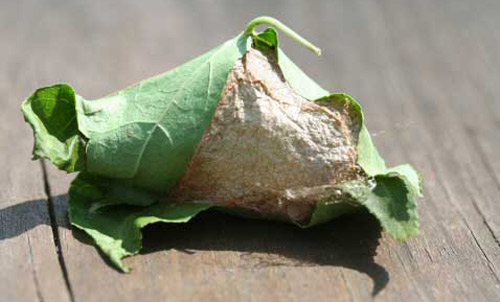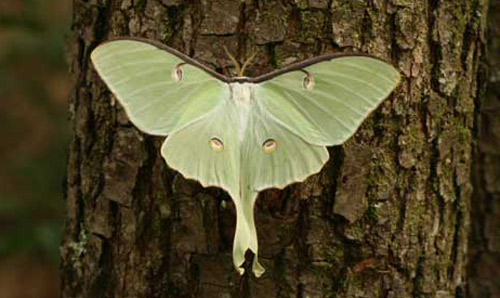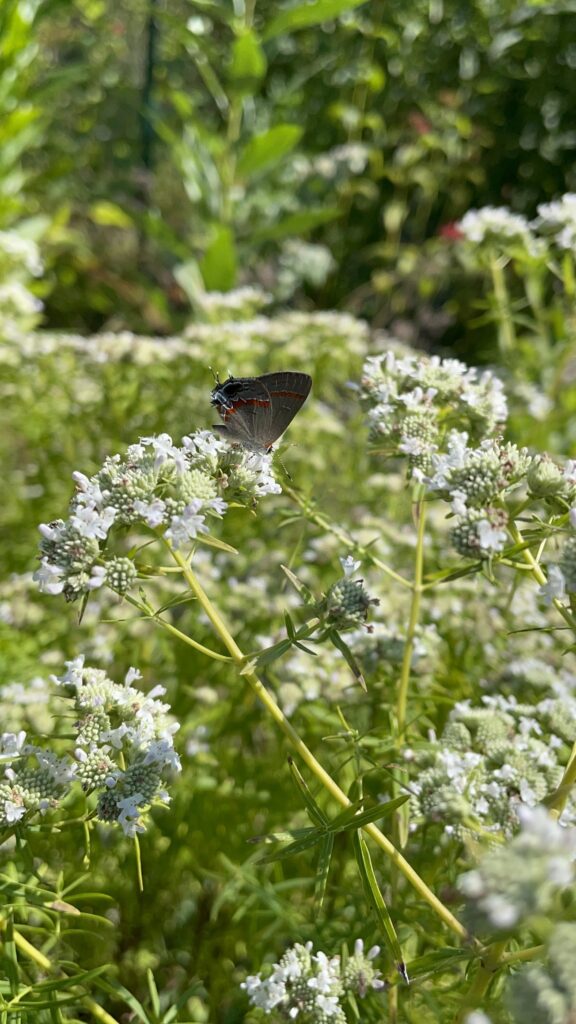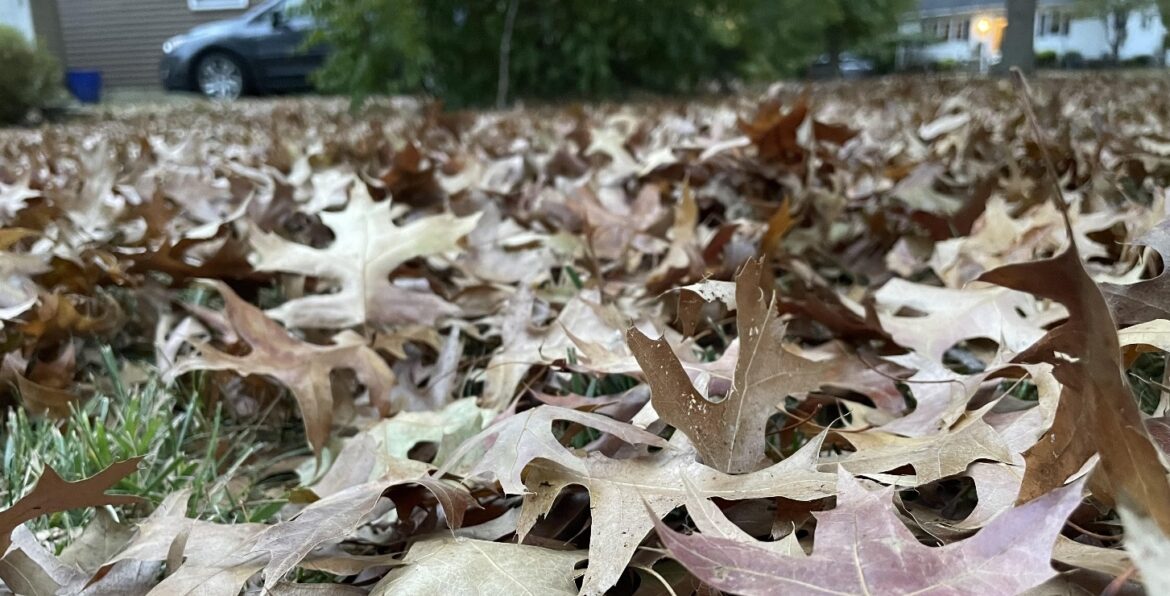Many of the native insects and pollinators that have benefited from increased native plant gardens, wildflower meadows, and pollinator habitats need leaf litter to survive the winter. When autumn leaves get bagged for the landfill, numerous species of moths, butterflies, bees, fireflies, and other beetles are sent to their demise. One of the easiest (and free) methods to support biodiversity in your yard is to leave the leaves.
From bee abodes to native gardens, wildflower meadows and more, homeowners throughout the Valley have been rethinking lawn and yard care to be more mindful towards the needs of our native bees, butterflies and beetles. These actions support pollinator populations, increase biodiversity and have positive benefits on ecosystem functions – services that we rely on.

An aspect of caring for our native pollinators that has not been quite as popular as say, planting colorful native blooms, is the creation of safe places for these critters to spend winter. The majority of the native insect population you had been cultivating all summer is not going to migrate south like Monarchs, or even a few miles. These insects are going to overwinter pretty much in place. Some of these insects overwinter as larvae, and caterpillars and glowworms do not really put down the miles, at any time. So, if you’d like to keep those beautiful swallowtail butterflies and big dipper fireflies in your yard next year, keep your autumn leaves this year!
Mature hardwood forests produce 2,000 – 3,000 pounds of litter per acre every year. Most of that litter comes in the form of autumn dropped leaves. This dropping of leaves is no oversight, but yet another ingenious way that mother nature functions as a closed loop system.

These green summertime food factories need to drop from the tree annually to prevent snow and ice injury to branches, dehydration, and unneeded energy expenditure. When the leaves reach the ground, lacking their chlorophyll, they are either dried or on their way to being so. Here, on the forest floor (or your backyard), they play a multitude of roles. A layer of leaves helps to retain soil moisture and regulate soil temperatures (hmmm, sounds like the role of bagged mulch….). Leaf litter also plays a role in reducing erosion by cushioning the impact of rain drops, and is a vital shelter for wildlife.

Luna and cecropia moths weave their cocoon among fallen leaves, staying there until late spring. Wooly bear caterpillars produce a natural antifreeze that allows them to curl up in leaf piles to pass the winter months. The red-banded hairstreak, a small butterfly, actually lays its eggs on fallen oak leaves, the leaves becoming the first meals of the just-hatched caterpillars. Mourning cloaks, another butterfly species, rely on leaf piles and crevices, like in shaggy bark to overwinter as an adult. Queen bumblebees burrow into the top inches of soil to overwinter, but a lofty layer of leaves above the sleeping queen helps to regulate soil temperatures during those cold winter months (much like your favorite quilt). And hummingbird clearwings, those neat moths we see during the height of summer hovering in front of flowers while also nectaring, mimicking our ruby-throated hummingbird? They spend winter as pupas (in a cocoon) in fallen leaves.
Are you a fan of the firefly light show? … Leave your leaves. These beetles also rely on logs and a hearty layer of fallen leaves to pass the snowy months.
You get where this is going. There is a ton of biodiversity in those dead, crispy leaves, and even more wildlife, think songbirds, amphibians, and small reptiles that rely on those invertebrates as meals and snacks to keep them going. Put your feet up this fall, and leave your leaves.
But how? Here are three easy suggestions, plus one more:
- When your autumnal leaves fall to the ground, don’t touch them. If this fully hands-off approach is not appropriate for you, no problem! If your trees produce several inches of fallen leaves on the lawn, and you want to keep that lawn, this might not be the best method for you.
- Rake, yes please rake – leaf blowers provide quite a punch to invertebrates even though they maintain exoskeletons – into garden beds and under your trees. Make a layer of leaves a few inches thick for the best outcomes. If you want to keep the leaves in place during the warmer months, they will perform the same roles as mulch, but for free! If you need to remove the leaves, come growing season, just wait until the daytime temperatures steadily reach at least 50* F. This is when your leaf layers will be relatively free of overwintering invertebrates!
- Collect and pile the leaves into a corner of your yard, maybe along a woodline, that is out of the way. These leaves can remain in place, slowly decompose and put nutrients back into the soil! They can be contained with a low enclosure made of simple box wire fencing and rebar.
- Have lawn you want to smother or remove? Rake your leaves up, and pile them there. A thick layer of leaves can smother lawn, making space for planting a pollinator garden, native tree and shrubs, or a small wildflower meadow!
For more information about #leavetheleaves, please visit these resources:
- https://xerces.org/blog/leave-the-leaves
- https://www.nwf.org/Magazines/National-Wildlife/2015/OctNov/Gardening/Leave-the-Leaves
- https://wildseedproject.net/2020/12/leave-the-leaves







